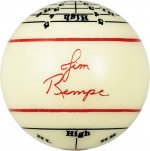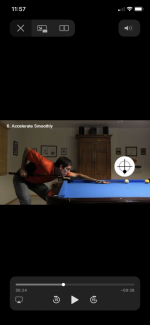dquarasr
Registered
Huh? I thought 5 represents the miscue limit. It’s equivalent to the stripe of a striped ball, which I understood to be the limit. See this image of the Rempe ball.Where is the marked miscue limit on the Rempe ball? The limit is commonly understood to be halfway from center to edge of the cue ball, like the blue circle below, but I don't see any mark there...?
EDIT: I found a pic online of a Rempe ball with more lines (is that the other side of the ball?). #3 is the miscue limit (see below)
pj
chgo
View attachment 584000View attachment 584006

